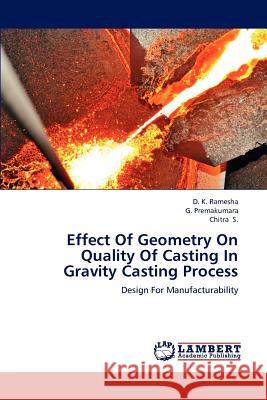Effect Of Geometry On Quality Of Casting In Gravity Casting Process » książka
Effect Of Geometry On Quality Of Casting In Gravity Casting Process
ISBN-13: 9783847304722 / Angielski / Miękka / 2012 / 84 str.
Effect Of Geometry On Quality Of Casting In Gravity Casting Process
ISBN-13: 9783847304722 / Angielski / Miękka / 2012 / 84 str.
(netto: 209,23 VAT: 5%)
Najniższa cena z 30 dni: 219,69 zł
ok. 10-14 dni roboczych
Bez gwarancji dostawy przed świętami
Darmowa dostawa!
As in any Casting process, Gravity die casting process has a significant rejection due to defective casting process. There are many factors which affects these defects in the component. One of the main reasons is the improper design of the component itself. If the component geometry is properly studied and analyzed, it can effectively reduce the defects arising in the casting of a component. Design For Manufacturability (DFM) during the component design stage eliminates the need for tool correction and re-tooling at the later stage of product life cycle which will indirectly increase the cost of the end product. The main objective of this research work is to study the geometry of the Gravity Casting Part, understand the defect pattern using Non destructive testing and thermal analysis and relate the geometry parameters to the induced defect in the casting. The idea is also to prepare a set of recommendation as a tool for Design for Manufacturability for Gravity Casting Process.
As in any Casting process, Gravity die casting process has a significant rejection due to defective casting process. There are many factors which affects these defects in the component. One of the main reasons is the improper design of the component itself. If the component geometry is properly studied and analyzed, it can effectively reduce the defects arising in the casting of a component. Design For Manufacturability (DFM) during the component design stage eliminates the need for tool correction and re-tooling at the later stage of product life cycle which will indirectly increase the cost of the end product. The main objective of this research work is to study the geometry of the Gravity Casting Part , understand the defect pattern using Non destructive testing and thermal analysis and relate the geometry parameters to the induced defect in the casting. The idea is also to prepare a set of recommendation as a tool for Design for Manufacturability for Gravity Casting Process.











